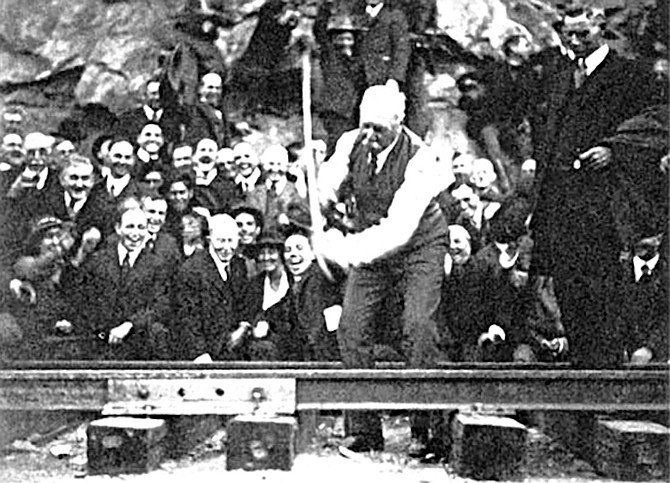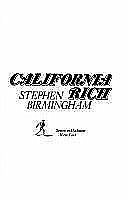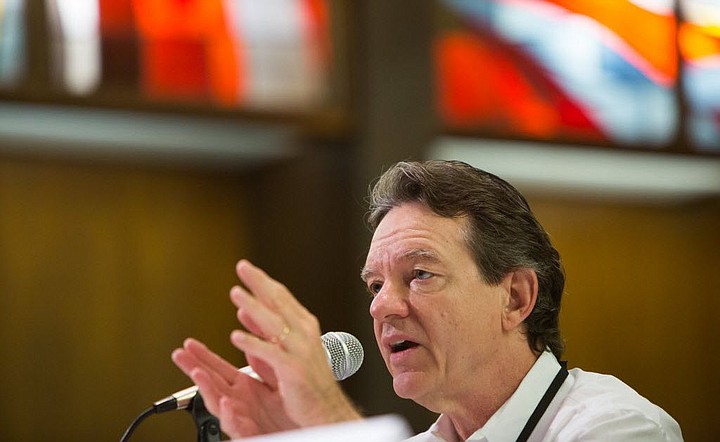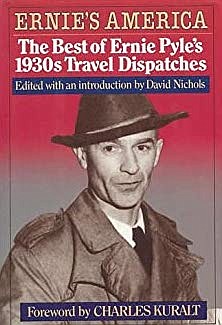 Facebook
Facebook
 X
X
 Instagram
Instagram
 TikTok
TikTok
 Youtube
Youtube

THE IS THE CHANCE the Jack Clark has, maybe the last chance in Boston now as the Red Sox’s designated hitter, with that lovely wall to his left and real fans in the seats, not the beach boys and their Day-Glo girlfriends that he ripped in San Diego. “It’s an honor to be booed by Boston fans,” says Clark. “In San Diego, you’d ground into a double play, the winning run would score, and they’d boo. Oh, what, do you mean we’re ahead? Oh. Yea!”’
Rick Reilly “This Is the Life That Jack Built” Sports Illustrated July 22,1991

IN THE EARLY 1900S, John Spreckels was famous throughout southern California as a prankster, practical joker, and wag, and the examples of the Spreckels wit suggest the somewhat primitive state of West Coast humor at the time....
John Spreckels’ friends were jokesters too. Once, for a bit of sport, a friend surreptitiously placed a mongrel puppy on Mr. Spreckels’ doorstep.
The puppy was taken in, and Spreckels then tried by a process of elimination to discover which of his friends had played this joke on him. It took him two years — at the end of which time the dog had grown Into an enormous canine of no discernible lineage — before he had narrowed down the possible donors of the dog to one man. At this point the dog died. Spreckels had the dog packed in excelsior, crated in a large wooden box, and shipped to his friend’s house. “I’m returning the dog you let me borrow,’’ Spreckels said. I always repay my debts.” Everyone roared. The dead-dog story circulated for years. It was considered one of the funniest things that had ever happened in San Diego.
Stephen Birmingham California Rich 1980
BEFORE I ENTERED JUNIOR HIGH, my family moved inland from Del Mar, the mellow, upwardly mobile surf town north of San Diego name-dropped in “Surfin’ U.S.A.,” to Rancho Santa Fe, a wealthy and conservative realm of citrus groves, migrant Mexican workers, and geriatrics in golf carts. Stone-cold Reagan country, and me and Senzo Moe would escape into the weed, toking up in so many lemon groves that the sharp tang of citrus peels still conjures up bud....
The public high school I attended — imagine an open-air Ridgemont High surrounded by sagebrush and rocky arroyos, with seagulls diving for your lunch meat — was a mosaic of pot-smoking cliques, their turf demarcated as succinctly as the multicolored regions in maps of the cerebral cortex: skateboarders, metal-heads, punks, death-rockers, stoners, and the various flavors of surfer — the long-haired Zep fans, the cue balls that dug ska, and the dread-headed ones we called Waspafarians....
We knew from Leary and Alpert the importance of set and setting, advice we both followed and blatantly ignored. Outdoor Dead shows were a cross between the bardos of the Tibetan afterlife and romper rooms, but North County’s unspoiled zones were the greatest backdrops. The summer we were gobbling all of Squiggles’s white blotter, we’d time our doses to hit at sunset.
We’d kick back on the coppery cliffs of Red Rocks beneath a hunchbacked pine and watch the sun melt into the immense, resplendent sea. The sky struck the total chord of the spectrum, from the reddish lump of the slipping orb through the violet haze of the canopy above. And to the east was the distinct boundary where dusk stopped and evening began to sketch the uncertain hieroglyphs of the stars.
Erik Davis “Teen Head: Confessions of a High School Stoner” The Village Voice June 22,1993

"ONE OF THE NICE THINGS about San Diego is that I’ve managed to find a neighborhood that’s an awful lot like L.A. in the fifties,” [artist Robert Irwin] went on: “Very laid-back and stable. A lot of my neighbors work nearby, in the sailmaking shops and other businesses nestled along the water. As you can see” — we were now approaching the Point Loma district, straddling the hills that overlook the mouth of San Diego Bay — “real nice in-and-out. You can wake up in the morning, walk out on the deck, and see what kind of day it’s going to be. It could easily make you happy if you didn’t watch yourself.” ...
“There’s a real magical quality to this bay,” Irwin was now saying. In the distance, on the water’s far shore, the skyscrapers of downtown San Diego glistened in the afternoon sun, and beyond them loomed the low brown mountains of Mexico. “And the main feature of it is its absolute silence. This is a terrifically busy harbor. The Navy has the place churning all the time. I can sit here and watch the fleet coming in and going out at all hours of the day. Sometimes one of the big carriers will float in — so big, so close you feel
you could just lean out and touch it. It seems to take up the entire visual field. And not a sound. Absolute silence. I don’t know why — maybe it has to do with the surrounding topography, the baffle of the hills — but it’s as if the bay just swallowed up all the noise.” A flock of pelicans floated by in the mid-distance; closer in, a hummingbird darted and froze before a feeder dangling from the balcony’s rafters.
Lawrence Weschler “In a Desert of Pure Feeling” The New Yorker June 7, 1993

THERE HAS BEEN A LOT OF TALK in various places about the government throwing up gigantic new defense industries, bringing in thousands of people to run them, yet providing no places for these new people to live.
Here in San Diego, for instance, men are actually driving eighty miles a day to work. Homeowners are buying double-decked bunks, putting them in their garages, and renting them out to aircraft workmen.
The greatest congestion is in the area around the aircraft plants. It seems single men don’t like to travel far to work, so they are jammed up as many as four in a room in rooming houses near the plant. But the government is doing something about it here. It is, in fact, building the biggest government housing project in America.
It is creating a whole new city just outside of San Diego — yet within the city limits — a city of three thousand houses, which will hold at least ten thousand people. It is up on the mesa above San Diego, and you can see a long way from there. The place, so far, is called the Kearny Mesa project.
It wasn’t started until last February. When ground was broken, it was absolutely untouched mesa, covered with high bush and lousy with sidewinder rattlesnakes. Today the houses stretch almost as far as you can see. The first families have already moved in. Building goes steadily on.
More than three thousand men are working on it.
The rattlesnakes, incidentally, are putting up a fight for their domain. They tell me there have been ninety workmen in the hospital this spring with rattlesnake bites.
This new city will be two-and-a-half miles long, a mile and a half wide. It will have parks and playgrounds and churches. It will have two elementary schools and one junior high school. It will have stores at each end and in the middle.
It is six miles from downtown San Diego, and there will be bus service. The whole thing is costing a little under ten million dollars. The contract calls for completion within three hundred working days, which means by midwinter.
The houses are permanent — not of the semipermanent Army-cantonment type. They are compact and furnished with all modern contraptions. No two houses of the same design are put side by side. They sit back from the street with ample lawn space. Two or three years from now, when grass and trees and shrubbery have their way, the city will be nice to look at.
There isn’t a house with a garage in this new city. Cars will have to stand out, the idea being, apparently, that when people start buying these houses after the war, they can build their own garages.
For after the war the government intends to sell the whole thing — not by the individual house, but to private companies able to take over large sections of four hundred to five hundred houses. They, in turn, will sell them to individuals. These three thousand houses will be rented now only to men doing defense work — which here means largely the workers at Consolidated Aircraft.
The houses are of three sizes — one-, two-, and three-bedroom. The rental rate will not be based on size, but upon the occupant’s wages.
The size of the house a workman gets depends not on his salary but on the size of his family. A man can’t get a big house just because he can afford it. If you’re married, but childless, you get only a one-bedroom house. Some other fellow might get a three-bedroom house and pay less rent than you do, simply because he has a big family and is making less.
Ernie Pyle Ernie's America 1989
The Reader will pay $10 for submissions to "Out of Context" that are selected for publication. Choices must be drawn from books or out-of-town periodicals. Include author, title, date of publication, and your phone number. Send to "Out of Context," 2323 Broadway, San Diego, CA 92102


THE IS THE CHANCE the Jack Clark has, maybe the last chance in Boston now as the Red Sox’s designated hitter, with that lovely wall to his left and real fans in the seats, not the beach boys and their Day-Glo girlfriends that he ripped in San Diego. “It’s an honor to be booed by Boston fans,” says Clark. “In San Diego, you’d ground into a double play, the winning run would score, and they’d boo. Oh, what, do you mean we’re ahead? Oh. Yea!”’
Rick Reilly “This Is the Life That Jack Built” Sports Illustrated July 22,1991

IN THE EARLY 1900S, John Spreckels was famous throughout southern California as a prankster, practical joker, and wag, and the examples of the Spreckels wit suggest the somewhat primitive state of West Coast humor at the time....
John Spreckels’ friends were jokesters too. Once, for a bit of sport, a friend surreptitiously placed a mongrel puppy on Mr. Spreckels’ doorstep.
The puppy was taken in, and Spreckels then tried by a process of elimination to discover which of his friends had played this joke on him. It took him two years — at the end of which time the dog had grown Into an enormous canine of no discernible lineage — before he had narrowed down the possible donors of the dog to one man. At this point the dog died. Spreckels had the dog packed in excelsior, crated in a large wooden box, and shipped to his friend’s house. “I’m returning the dog you let me borrow,’’ Spreckels said. I always repay my debts.” Everyone roared. The dead-dog story circulated for years. It was considered one of the funniest things that had ever happened in San Diego.
Stephen Birmingham California Rich 1980
BEFORE I ENTERED JUNIOR HIGH, my family moved inland from Del Mar, the mellow, upwardly mobile surf town north of San Diego name-dropped in “Surfin’ U.S.A.,” to Rancho Santa Fe, a wealthy and conservative realm of citrus groves, migrant Mexican workers, and geriatrics in golf carts. Stone-cold Reagan country, and me and Senzo Moe would escape into the weed, toking up in so many lemon groves that the sharp tang of citrus peels still conjures up bud....
The public high school I attended — imagine an open-air Ridgemont High surrounded by sagebrush and rocky arroyos, with seagulls diving for your lunch meat — was a mosaic of pot-smoking cliques, their turf demarcated as succinctly as the multicolored regions in maps of the cerebral cortex: skateboarders, metal-heads, punks, death-rockers, stoners, and the various flavors of surfer — the long-haired Zep fans, the cue balls that dug ska, and the dread-headed ones we called Waspafarians....
We knew from Leary and Alpert the importance of set and setting, advice we both followed and blatantly ignored. Outdoor Dead shows were a cross between the bardos of the Tibetan afterlife and romper rooms, but North County’s unspoiled zones were the greatest backdrops. The summer we were gobbling all of Squiggles’s white blotter, we’d time our doses to hit at sunset.
We’d kick back on the coppery cliffs of Red Rocks beneath a hunchbacked pine and watch the sun melt into the immense, resplendent sea. The sky struck the total chord of the spectrum, from the reddish lump of the slipping orb through the violet haze of the canopy above. And to the east was the distinct boundary where dusk stopped and evening began to sketch the uncertain hieroglyphs of the stars.
Erik Davis “Teen Head: Confessions of a High School Stoner” The Village Voice June 22,1993

"ONE OF THE NICE THINGS about San Diego is that I’ve managed to find a neighborhood that’s an awful lot like L.A. in the fifties,” [artist Robert Irwin] went on: “Very laid-back and stable. A lot of my neighbors work nearby, in the sailmaking shops and other businesses nestled along the water. As you can see” — we were now approaching the Point Loma district, straddling the hills that overlook the mouth of San Diego Bay — “real nice in-and-out. You can wake up in the morning, walk out on the deck, and see what kind of day it’s going to be. It could easily make you happy if you didn’t watch yourself.” ...
“There’s a real magical quality to this bay,” Irwin was now saying. In the distance, on the water’s far shore, the skyscrapers of downtown San Diego glistened in the afternoon sun, and beyond them loomed the low brown mountains of Mexico. “And the main feature of it is its absolute silence. This is a terrifically busy harbor. The Navy has the place churning all the time. I can sit here and watch the fleet coming in and going out at all hours of the day. Sometimes one of the big carriers will float in — so big, so close you feel
you could just lean out and touch it. It seems to take up the entire visual field. And not a sound. Absolute silence. I don’t know why — maybe it has to do with the surrounding topography, the baffle of the hills — but it’s as if the bay just swallowed up all the noise.” A flock of pelicans floated by in the mid-distance; closer in, a hummingbird darted and froze before a feeder dangling from the balcony’s rafters.
Lawrence Weschler “In a Desert of Pure Feeling” The New Yorker June 7, 1993

THERE HAS BEEN A LOT OF TALK in various places about the government throwing up gigantic new defense industries, bringing in thousands of people to run them, yet providing no places for these new people to live.
Here in San Diego, for instance, men are actually driving eighty miles a day to work. Homeowners are buying double-decked bunks, putting them in their garages, and renting them out to aircraft workmen.
The greatest congestion is in the area around the aircraft plants. It seems single men don’t like to travel far to work, so they are jammed up as many as four in a room in rooming houses near the plant. But the government is doing something about it here. It is, in fact, building the biggest government housing project in America.
It is creating a whole new city just outside of San Diego — yet within the city limits — a city of three thousand houses, which will hold at least ten thousand people. It is up on the mesa above San Diego, and you can see a long way from there. The place, so far, is called the Kearny Mesa project.
It wasn’t started until last February. When ground was broken, it was absolutely untouched mesa, covered with high bush and lousy with sidewinder rattlesnakes. Today the houses stretch almost as far as you can see. The first families have already moved in. Building goes steadily on.
More than three thousand men are working on it.
The rattlesnakes, incidentally, are putting up a fight for their domain. They tell me there have been ninety workmen in the hospital this spring with rattlesnake bites.
This new city will be two-and-a-half miles long, a mile and a half wide. It will have parks and playgrounds and churches. It will have two elementary schools and one junior high school. It will have stores at each end and in the middle.
It is six miles from downtown San Diego, and there will be bus service. The whole thing is costing a little under ten million dollars. The contract calls for completion within three hundred working days, which means by midwinter.
The houses are permanent — not of the semipermanent Army-cantonment type. They are compact and furnished with all modern contraptions. No two houses of the same design are put side by side. They sit back from the street with ample lawn space. Two or three years from now, when grass and trees and shrubbery have their way, the city will be nice to look at.
There isn’t a house with a garage in this new city. Cars will have to stand out, the idea being, apparently, that when people start buying these houses after the war, they can build their own garages.
For after the war the government intends to sell the whole thing — not by the individual house, but to private companies able to take over large sections of four hundred to five hundred houses. They, in turn, will sell them to individuals. These three thousand houses will be rented now only to men doing defense work — which here means largely the workers at Consolidated Aircraft.
The houses are of three sizes — one-, two-, and three-bedroom. The rental rate will not be based on size, but upon the occupant’s wages.
The size of the house a workman gets depends not on his salary but on the size of his family. A man can’t get a big house just because he can afford it. If you’re married, but childless, you get only a one-bedroom house. Some other fellow might get a three-bedroom house and pay less rent than you do, simply because he has a big family and is making less.
Ernie Pyle Ernie's America 1989
The Reader will pay $10 for submissions to "Out of Context" that are selected for publication. Choices must be drawn from books or out-of-town periodicals. Include author, title, date of publication, and your phone number. Send to "Out of Context," 2323 Broadway, San Diego, CA 92102
Comments